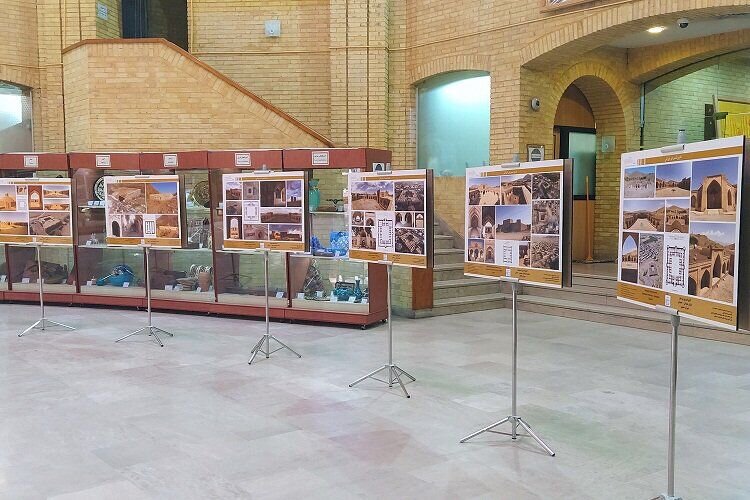Photo exhibit turns spotlight on historical Iranian caravanserais

TEHRAN – A collection of photos of 56 Iranian caravansaries, which are candidates for a collective inclusion in UNESCO’S cultural heritage list, has been put on display at the headquarters of the Ministry of Cultural Heritage, Tourism, and Handicrafts in Tehran.
The exhibition features photos of the selected caravanserais that span a wide range of architectures, materials, and construction periods, and their distribution is spread throughout 26 provinces of the country, IRNA reported on Wednesday.
Opening on Tuesday, the exhibit will come to an end on April 18, which is the International Day for Monuments and Sites.
Possible UNESCO tag for Iranian caravanserais
Iran has put forward a selection of 56 caravansaries as a candidate for a collective inclusion in UNESCO’S cultural heritage list.
Last year, the tourism ministry announced that Iran is developing a dossier for a selection of its historical caravanserais for a possible inscription on the UNESCO World Heritage list. In this regard, cultural heritage experts are assessing such monuments that are scattered across the country to make a shortlist in terms of their architecture, historical, and cultural values.
Caravanserai (also Caravansary or Caravansaray) is a building that served as the inn of the Orient, providing accommodation for commercial, pilgrim, postal, and especially official travelers.
According to Encyclopedia Iranica, from the number of surviving caravansaries and their sizes, it is clear that in Safavid and Qajar times there was a state architectural department that was specifically concerned with the construction of caravansaries and stations on the overland routes. Furthermore, in the cities, several caravansaries were erected as lodging houses, depots, and commercial offices in the vicinity of the bazaars.
A typical caravansary consists of a square or rectangular plan centered around a courtyard with only one entrance and arrangements for defense if necessary. Whether fortified or not, it at least provided security against beasts of prey and attacks by brigands.
The earliest caravanserais in Iran were built during the Achaemenid era (550-330 BC). Centuries later, when Shah Abbas I assumed power from 1588 – to 1629, he ordered the construction of a network of caravanserais across the country.
For many travelers, staying in or even visiting a centuries-old caravanserai, can be a wide experience; they have an opportunity to feel the past, a time travel back into a forgotten age.
Such roadside inns were once constructed along ancient caravan routes in the Muslim world to shelter people, their goods, and animals. The former Silk Roads may be the most famous example dotted by caravanserais.
Cozy chambers that are meticulously laid out around a vast courtyard may easily evoke spirits of the past. It’s not hard to fancy the hustle and bustle of merchants bargaining on prices, recounting their arduous journeys to one another while their camels chewing hay! You can also conceive the idea of local architectural style and material in its heyday.
It is not hard to fancy the hustle and bustle of merchants bargaining on prices, recounting their arduous journeys to one another while their camels chewing hay!
Passing major roads in the country, one may see crumbling caravanserais many of which were abandoned for ages. In the Information Age, such guest houses have largely lost their actual usage.
However, a couple of years ago, the Iran tourism ministry introduced a scheme to keep them alive and profitable; tens of caravanserais are ceded to the private investors for better maintenance. Now, some are exclusively renovated and repurposed into boutique hotels and tourist lodgings.
They often had massive portals supported by elevated load-bearing walls. Guest rooms were constructed around the courtyard and stables behind them with doors in the corners of the yard.
ABU/MG

Leave a Comment